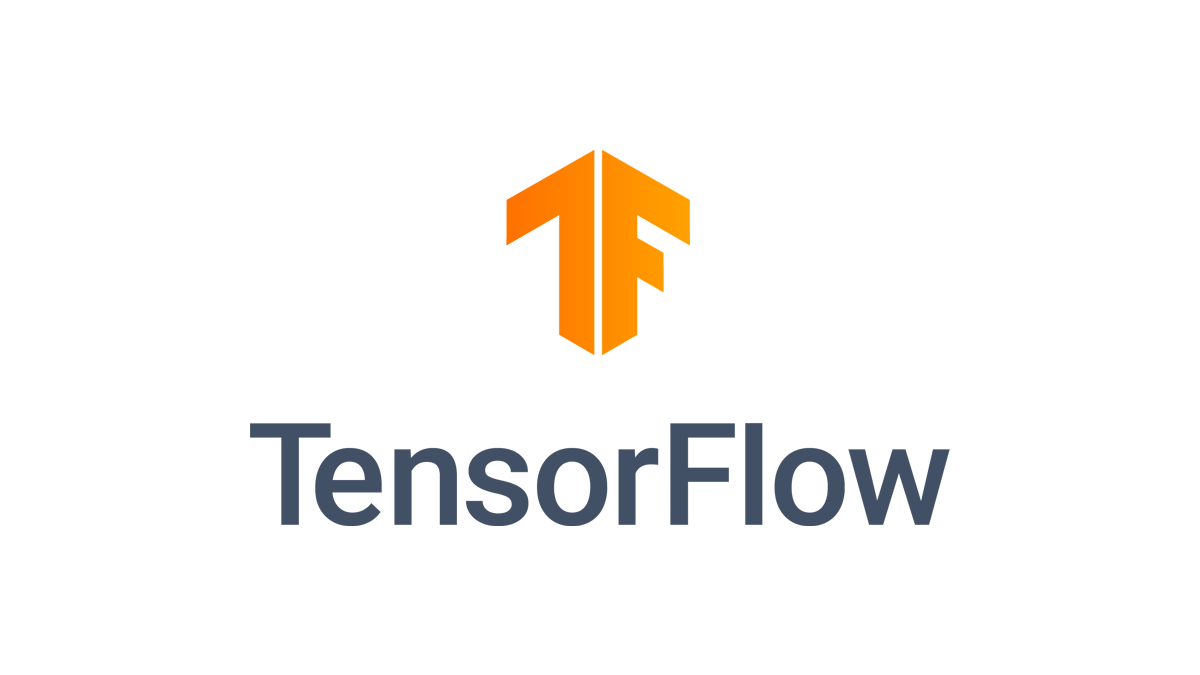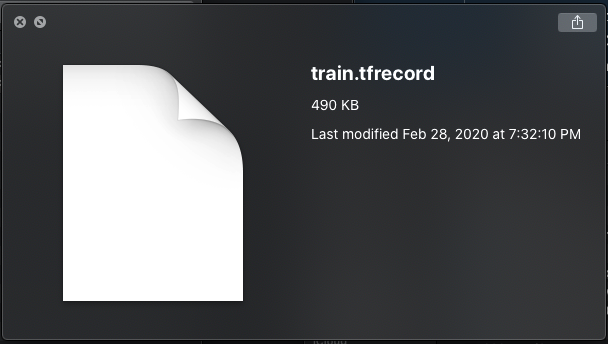Inspecting TensorFlow .tfrecord Files: A Guide
Learn how to easily inspect and debug your TensorFlow .tfrecord files to ensure data quality and model training efficiency.
Learn how to easily inspect and debug your TensorFlow .tfrecord files to ensure data quality and model training efficiency.
This guide provides a step-by-step approach to reading data from TFRecord files using TensorFlow. TFRecord format is a simple and efficient way to store a sequence of binary records, making it suitable for large datasets. We'll cover importing necessary libraries, defining a parsing function, creating a dataset, applying the parsing function, and inspecting the data.
import tensorflow as tfdef _parse_function(example_proto):
# Define the features in your TFRecord file
features = {
'feature1_name': tf.io.FixedLenFeature([], tf.string),
'feature2_name': tf.io.FixedLenFeature([], tf.int64),
# ... add other features and their types
}
# Parse the example
parsed_features = tf.io.parse_single_example(example_proto, features)
return parsed_featuresdataset = tf.data.TFRecordDataset('path/to/your/file.tfrecord')parsed_dataset = dataset.map(_parse_function)for features in parsed_dataset.take(1): # Inspect the first example
print(features)Note: Replace 'feature1_name', tf.string, 'feature2_name', tf.int64, etc. with the actual names and data types of the features in your TFRecord file.
This Python code defines a data parsing pipeline using TensorFlow. It reads data from a TFRecord file, parses each example according to a defined feature structure, decodes and reshapes image data, and then iterates through the parsed dataset to display the content of the first example.
import tensorflow as tf
# Define a function to parse a single example from the TFRecord file
def _parse_function(example_proto):
# Define the features in your TFRecord file
features = {
'image': tf.io.FixedLenFeature([], tf.string),
'label': tf.io.FixedLenFeature([], tf.int64),
'height': tf.io.FixedLenFeature([], tf.int64),
'width': tf.io.FixedLenFeature([], tf.int64),
}
# Parse the example
parsed_features = tf.io.parse_single_example(example_proto, features)
# Decode the image
parsed_features['image'] = tf.io.decode_raw(parsed_features['image'], tf.uint8)
parsed_features['image'] = tf.reshape(parsed_features['image'], [parsed_features['height'], parsed_features['width'], 3])
return parsed_features
# Create a dataset from the TFRecord file
dataset = tf.data.TFRecordDataset('path/to/your/file.tfrecord')
# Map the parsing function to each example in the dataset
parsed_dataset = dataset.map(_parse_function)
# Iterate through the parsed dataset to inspect the data
for features in parsed_dataset.take(1): # Inspect the first example
print(features)Explanation:
features dictionary, mapping feature names (like 'image', 'label', 'height', 'width') to their corresponding data types in the TFRecord.tf.io.parse_single_example parses the binary data of a single example based on the provided features structure.tf.data.TFRecordDataset object, pointing to your TFRecord file._parse_function to each example in the dataset, effectively converting the raw binary data into a dictionary of tensors.Remember:
"path/to/your/file.tfrecord" with the actual path to your TFRecord file.features dictionary in the _parse_function to match the exact feature names and data types used when you created the TFRecord file._parse_function if needed, such as data augmentation or normalization.Here are some additional notes to enhance the understanding and usage of the provided code:
Understanding TFRecords
Code Enhancements and Considerations
_parse_function: You can perform additional data preprocessing steps within this function, such as:
tf.image.resize to resize images to a consistent size.tf.image.dataset.batch(batch_size) to group multiple examples into batches. This is crucial for efficient training, especially on GPUs.dataset.shuffle(buffer_size) to shuffle the order of examples. This helps prevent the model from learning patterns specific to the data order.dataset.cache() to cache the dataset in memory after the first epoch. This can significantly speed up training if the dataset fits in memory._parse_function to handle cases where certain features might be missing in some TFRecord examples.Example of Enhanced Code
import tensorflow as tf
def _parse_function(example_proto):
# ... (feature definitions from previous example)
# Decode the image
parsed_features['image'] = tf.io.decode_raw(parsed_features['image'], tf.uint8)
parsed_features['image'] = tf.reshape(parsed_features['image'], [parsed_features['height'], parsed_features['width'], 3])
# Data Preprocessing (Example)
parsed_features['image'] = tf.image.resize(parsed_features['image'], [224, 224]) # Resize image
parsed_features['image'] = tf.cast(parsed_features['image'], tf.float32) / 255.0 # Normalize
return parsed_features
dataset = tf.data.TFRecordDataset('path/to/your/file.tfrecord')
dataset = dataset.map(_parse_function)
dataset = dataset.shuffle(buffer_size=1000) # Shuffle data
dataset = dataset.batch(32) # Create batches of 32
dataset = dataset.prefetch(tf.data.AUTOTUNE) # Optimize for performance
# ... (rest of the code)Key Points to Remember
_parse_function and data pipeline to match the specific structure and requirements of your TFRecord files and machine learning task.This code snippet demonstrates how to read and parse data from a TFRecord file using TensorFlow in Python. Here's a breakdown:
1. Importing TensorFlow:
import tensorflow as tf imports the TensorFlow library, enabling you to work with TFRecords.2. Defining the Parsing Function (_parse_function):
features = { ... }: You specify the names of your features (e.g., 'feature1_name', 'feature2_name') and their corresponding data types (e.g., tf.string, tf.int64).tf.io.parse_single_example(...): This function takes a raw TFRecord example and uses the features dictionary to extract and decode the data into a dictionary-like object.3. Creating the Dataset:
dataset = tf.data.TFRecordDataset('path/to/your/file.tfrecord'): This line creates a TFRecordDataset object, which represents the data in your TFRecord file.4. Applying the Parsing Function:
parsed_dataset = dataset.map(_parse_function): This applies the _parse_function to each example in the dataset. The result is a new dataset (parsed_dataset) where each element is a parsed dictionary of features.5. Inspecting the Data:
for features in parsed_dataset.take(1): ...: This loop iterates through the first example in the parsed_dataset.print(features): This prints the parsed features of the first example, allowing you to verify that the data is being read and parsed correctly.Key Points:
features dictionary in the _parse_function is crucial for telling TensorFlow how to interpret the bytes in the TFRecord file.tf.data.Dataset API provides a powerful way to load, process, and iterate through data in TensorFlow.This code snippet demonstrates how to read and parse data from a TFRecord file using TensorFlow in Python. It emphasizes the importance of defining the correct feature structure in the parsing function to interpret the binary data correctly. The use of the tf.data.Dataset API simplifies the process of loading, parsing, and iterating through the data, making it efficient for handling large datasets in TensorFlow.
 How to inspect a Tensorflow .tfrecord file? - GeeksforGeeks | A Computer Science portal for geeks. It contains well written, well thought and well explained computer science and programming articles, quizzes and practice/competitive programming/company interview Questions.
How to inspect a Tensorflow .tfrecord file? - GeeksforGeeks | A Computer Science portal for geeks. It contains well written, well thought and well explained computer science and programming articles, quizzes and practice/competitive programming/company interview Questions. TFRecord and tf.train.Example | TensorFlow Core | Aug 16, 2024 ... Example messages to and from .tfrecord files. Note: While useful, these structures are optional. There is no need to convert existing code to ...
TFRecord and tf.train.Example | TensorFlow Core | Aug 16, 2024 ... Example messages to and from .tfrecord files. Note: While useful, these structures are optional. There is no need to convert existing code to ... Read dataset from TFRecord format - PyTorch Forums | Hi, I need to read data from TensorFlow protocol buffer format “TFRecord” (aka Example+Features, see https://www.tensorflow.org/api_docs/python/tf/python_io/TFRecordWriter). Is there a solution for that out there? Thanks!
Read dataset from TFRecord format - PyTorch Forums | Hi, I need to read data from TensorFlow protocol buffer format “TFRecord” (aka Example+Features, see https://www.tensorflow.org/api_docs/python/tf/python_io/TFRecordWriter). Is there a solution for that out there? Thanks! How to Create to a TFRecord File for Computer Vision and Object ... | TensorFlow expedites the machine learning process markedly. From abstracting complex linear algebra to including pre-trained models and weights, getting the most out of TensorFlow is a full-time job.
How to Create to a TFRecord File for Computer Vision and Object ... | TensorFlow expedites the machine learning process markedly. From abstracting complex linear algebra to including pre-trained models and weights, getting the most out of TensorFlow is a full-time job.However, when it comes to loading data in ways that TensorFlow expects in order to perform as efficiently as it does, every
 How to train a Keras model on TFRecord files | Jul 29, 2020 ... import tensorflow as tf from functools import partial ... Train TFRecord Files: 14 Validation TFRecord Files: 2 Test TFRecord Files: 16 ...
How to train a Keras model on TFRecord files | Jul 29, 2020 ... import tensorflow as tf from functools import partial ... Train TFRecord Files: 14 Validation TFRecord Files: 2 Test TFRecord Files: 16 ... Tensorflow Records? What they are and how to use them | by ... | Interest in Tensorflow has increased steadily since its introduction in November 2015. A lesser-known component of Tensorflow is the…
Tensorflow Records? What they are and how to use them | by ... | Interest in Tensorflow has increased steadily since its introduction in November 2015. A lesser-known component of Tensorflow is the…